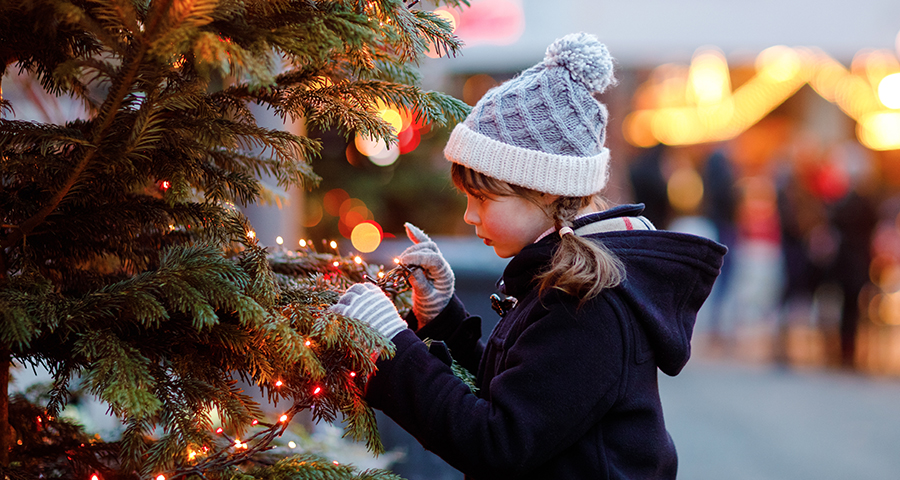Advice
Help Autistic Children This Christmas


Expert / 19 December, 2024 / Ellie Thompson
Nikki Saunders, author and creator of Ready, Eddie Go!, brings a wealth of personal experience to her mission of supporting autistic children and their families. Inspired by her son Tyler’s journey with autism, sensory processing differences, and hypermobility, Nikki has dedicated her career to fostering understanding and representation. Her award-winning books and hit SKY Kids series provide practical insights and relatable stories for neurodivergent children. Drawing from her own family’s experiences, Nikki shares her top tips to help autistic children navigate the joys and challenges of the Christmas season.
How to do Christmas with an Autistic Child
Enjoying Christmas your way
If there is anything I have learned over the years, it will be to allow yourself and your family to do Christmas your way! There are lots of ways to make Christmas happy and joyful for autistic children. We do not have to follow the same traditions as other people or feel as though we should live up to others expectations. When we drop any expectations of what Christmas should look like, it can be a joyful experience for everyone! It’s great to build your own helpful traditions to suit the needs of your children.
Christmas season can be a very exciting but also an overwhelming time for our autistic children. The build-up and sudden changes begin as early as the mid-end of November. Decorations and lights appear in shops, homes, and schools. Supermarkets become crowded with longer queues and unexpected visitors are more frequent too!
Maintaining routines
Try to maintain your child’s familiar routines where possible to help little ones feel safe and secure. For example, if they have a favorite game they like to play in the morning, a certain walk they like to go on with you or a favorite program they like to watch at a certain time of day. They may also want their special toy, teddy, or pet close to them.
The sensory experience
Christmas season brings new foods, lights, textures, loud music, different sounds, and sometimes tastes. It’s helpful to try and reduce the impact of these. For example, decorate the house with your child and gauge when you think it’s enough for them visually. For some children, you may need to put decorations up gradually and show them the items you are going to use the day before. The decorating can be done over a few days to reduce overwhelm, and you could decorate on a separate day to turning on the tree lights. The decorated tree alone might be enough for them. It is helpful to have some areas of your home Christmas lights and decoration-free. You can create a calm place in your living area for them to have time out when needed, such as a special cozy dark den that is decoration-free with their favorite toys or items inside!
Christmas dinner
It’s important to reduce any pressures around food. They don’t have to eat turkey and all the trimmings. Some children may like to have an adaptation of this, and others may need their safe foods such as pizza or nuggets, and that is absolutely fine. Children are unlikely to try new foods with all of the changes and especially if there is a visitor joining their table, therefore safe foods are a must.
Christmas jumper days
For some children, Christmas jumpers can feel itchy and uncomfortable. If little ones would prefer their favorite colored t-shirt without the label inside like Eddie does, then that’s okay, too. If your child would like to join in with Christmas Jumper Day but the materials are just too uncomfortable, then a soft Christmas t-shirt without the label can be a good option, too!
Visual timetables and schedules
Early preparation using visuals can help support children with knowing what to expect in the holiday season. Visuals help reduce uncertainty and anxieties, enabling children to feel more safe and secure as soon as the changes begin. For example, it can benefit children to know when any visitors are coming, when the school holiday begins, if you have scheduled a downtime day or if you have planned an activity for them. You may need to plan when ear defenders may be required or talk to your friends and family about your child’s needs first. Christmas countdown calendars are great for supporting understanding around that long wait for the big day!
Gifts and wrapping
Firstly, don’t feel as though you have to go and buy lots of toys. Don’t worry about having expectations of how toys and presents should look or be either. It’s about what is meaningful to your child. When my son was small, he opened his gifts over two days as he liked to explore one toy for a longer time. One year, as he grew older and could communicate his needs a bit more, he requested a typewriter (unwrapped) and was fascinated by it! For little ones who need to connect with a toy immediately, it’s helpful to unbox the toy and add batteries to reduce any frustration on the morning, you may not need to even wrap some of them! If possible, talk to your child about their preferences and ask them how they would like to receive their gift.
Routine changes in school
Routines begin to change to allow for rehearsing for performances along with different activities and Christmas jumper days! This can be very overwhelming for autistic children as their current routines help them to feel safe and secure. It will be important for your child’s teacher to discuss any changes with your child that they will be experiencing in school and to prepare visual timetables. Consistent open home/school communication is key for parents, too. Autistic children should not feel pressured to participate in performances if they feel uncomfortable. To help with any transitions between activities, visual timers can help children visually process when one activity may finish before starting the next.
Downtime
It can benefit everyone to schedule downtime days during the Christmas holidays, especially around Christmas activities and busy days. This removes pressure from all of the family, enabling you to take the day as it comes.
Removal of decorations
That tree the children hadn’t seen for a year and have probably just gotten used to, is about to come down again! Preparing your child for the removal of decorations can help support them to process that the Christmas season has finished. This also supports their return to school, as most of the decorations will have been taken down meaning their surroundings will look different again.
A joyful Christmas means different things to different people. Have a lovely Christmas and remember to do it your way, for you and your family!
A little tip from Dr Claire Prosser:
“Finding the things that work are essential in planning for an enjoyable Christmas period for the family. Here’s a ‘top tip’ for introducing a Christmas tree, creating Christmas joy for your little one. Allow your child to decorate their own mini tree (or the family tree, if that works for you) with decorations which represent their interests. For example, you could place some bath foam numbers or letters on to the tree, buy or make planet decorations, or print some images of their favorite television character to place on the tree. By creating a link between your child’s special interest and Christmas, you offer safety and build intrigue, allowing your child to be a part of the Christmas experience in a way that is meaningful to them.”
An article by Nikki Saunders, author and executive producer of Ready, Eddie Go!
READ NEXT
Guest Edit: A Christmas Mum On The Run Look For December
Kids Footwear Perfect For The Winter Months Ahead
-

 Destination8 months ago
Destination8 months agoSingapore Airlines CEO set to join board of Air India, BA News, BA
-

 Breaking News10 months ago
Breaking News10 months agoCroatia to reintroduce compulsory military draft as regional tensions soar
-

 Gadgets3 months ago
Gadgets3 months agoSupernatural Season 16 Revival News, Cast, Plot and Release Date
-

 Tech News12 months ago
Tech News12 months agoBangladeshi police agents accused of selling citizens’ personal information on Telegram
-

 Productivity11 months ago
Productivity11 months agoHow Your Contact Center Can Become A Customer Engagement Center
-

 Gadgets3 weeks ago
Gadgets3 weeks agoFallout Season 2 Potential Release Date, Cast, Plot and News
-

 Breaking News10 months ago
Breaking News10 months agoBangladesh crisis: Refaat Ahmed sworn in as Bangladesh’s new chief justice
-

 Toys12 months ago
Toys12 months ago15 of the Best Trike & Tricycles Mums Recommend























